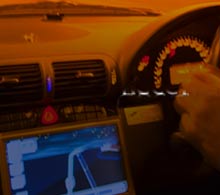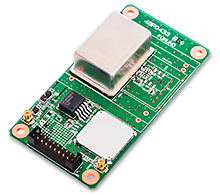Articles for ITS market
Motor show business model is at a turning point
- Tokyo Motor Show Report -
Free access to some venues against increases the number of visitors
The 46th Tokyo Motor Show (October 24 to November 4, 2019) has ended.
The number of visitors registered before the event reached 1.3 million, far exceeding the organizers goal of 1 million. This almost double the 770,000 people at the previous show two years ago.
Why has it recovered so well?
The main reason is that admission is free at some of the venues.
So why did organizers set up free venues?
There are two main reasons.
One is the response to decentralized venues. The Tokyo Big Sight East Building, which was the main venue until this show, was not available because it was renovated as the 2020 Tokyo Olympics and Paralympics Media Center. The show venues in the Odaiba area were largely divided into four locations. The four venues were connected by “Yurikamome”, an automated railway, and also free shuttle buses. They assumed that the number of visitors would be reduced due to the transportation difficulties Therefore they incentivized customers by making admission free at some venues.
Another major reason is that there were concerns about the decline in the overall motor show status and the lower visitor attendance due to a significant decrease of exhibiting automakers.
Although all Japanese automakers exhibited in Japan because the show is held in Japan, overseas manufacturers only included Daimler and Renault. Last time, super car makers including Ferrari and Lamborghini were also not exhibited. This time, the organizers of the show were greatly shocked by the withdrawal of Volkswagen, Audi, BMW, Volvo, etc., all of which are sold in Japan.
The tendency of these non-domestic automakers to stop participating in the motor show also happening at the Paris Show in France last year, the Detroit Show in America this year, and the Frankfurt Show in Germany. Therefore, the cause of the problem is not related to only the Tokyo show. In other words, the Tokyo Motor Show further proves the conventional motor show business model is no longer valid worldwide.
From a business perspective as an organizer this likely caused a significant drop in revenue for this show.
The show organizer has not released a breakdown of paid and free admissions for the 1.3 million visitors. In addition, it seems that automakers and auto parts makers were giving away many free invitation tickets. Therefore, even if the number of visitors doubled compared to the previous show, it is obvious the entrance fee revenue was flat or decreased. In addition, there is no doubt that the exhibition fees, which are the main revenue from the show, has also declined significantly as major overseas manufacturers withdrew.
 Mazda's world-first production EV, “MX-30”.
Mazda's world-first production EV, “MX-30”.
 NTT DOCOMO's booth introducing various new 5G services.
NTT DOCOMO's booth introducing various new 5G services.
 Various free attractions such as VR (virtual reality) are available.
Various free attractions such as VR (virtual reality) are available.
There are fewer exhibitors with impact
It is obvious the Tokyo Motor Show was forced to be held with various negative factors. Regarding the contents of the exhibition, it is hard to say if the level was satisfactory for visitors.
At the booths of Japanese automakers, EV (electric car) exhibitions stood out. Mazda unveiled the SUV “MX-30” and Honda unveiled the mass-produced compact car “e”.
However, both models are not actively selling in Japan. Mazda and Honda explained that their main customers are in China, which has a law on the number of EVs sold in country. And also Europe, where CO2 regulations will become increasingly severe in the future. Hearing such stories, awaken me as a Japanese.
In Japan, with the launch of Nissan "Leaf" and Mitsubishi "i-MiEV" in 2010, the development of charging infrastructure has progressed in various parts of the country. However EV sales have not increased significantly. Even though the Japanese people no longer consider EV’s as a special car, there are still many cases where EV purchases are not considered. This is due to the convenience of gasoline cars and the balance between new car prices and trade-in prices.
Automakers are aware that the demand for EVs in Japan will not increase unless EV sales are required by law. Based on this the Tokyo Motor Show is being used as a focal point to transmit Japan's EV technology to the world.
As expected exhibits related to automated driving were also reduced. The reasoning is that the introduction of automated driving at level 3 to society has led to a common understanding that countries around the world and automakers "will take more time to become a business". Although image recognition technology has been steadily evolving and development of laws at the United Nations is progressing, the entire automobile industry has recognized that there are still big social acceptance hurdles.
There were no exhibitors showing the connected car service utilizing 5G (5th generation) communication. This is scheduled to be put into everyday use in the first half of the 2020. NTT DOCOMO has introduced “D Car Sharing” between individuals, but it seems that there were not many people entering the booth. After all, at the motor show it is “car-centric” and therefore difficult to appeal to users for a “service-centric” business model.
In addition, “Future Expo” in the free area introduced drones, VR (virtual reality), and merchandise sales using face recognition. However, I didn't think it was a clear relationship of the current connection with the car.
The motor show has obviously reached a major turning point. I feel strongly that it is essential to create a new business model in order to continue and grow the Tokyo Motor Show.
Writer introduction

Mr. Kenji Momota Automotive journalist
His major is the world automotive industry and he is also familiar with the energy industry, IT and the aging society problem as the related fields. He acts around the world based in Japan and USA and writes for the general magazines, the technology journals and the automotive related media etc.
He is also commentator of motor race and world's motor show on TV program based on his career of the driver of Indy Racing League and NASCAR. In recent years, he has been covering about a paradigm shift from developed countries to developing countries, the motorized vehicle like EV and the telematics.
FURUNO ITS Journal
Click here for the latest articles after 2022 (in Japanese)2022
- The "realistic" self-driving roadmap shown by the Japanese government and a hands-on report on the latest Subaru EyeSight X
- Will FCVs (Fuel Cell Vehicles) Become Popular? ~New Movement in Toyota and Honda~
- The 'Complete' online sales of new cars start in Japan. Will this new way of buying cars take root?
- Many Firsts! On-Site Report from Tokyo Auto Salon 2022 - The author, who knows what goes on behind the scenes, looks back on 40 years of history. -
2021
- "Moving toward zero traffic fatalities for four-wheeled and two-wheeled vehicles globally in 2050" ~Experience on Honda's latest safety technologies~
- Tsuneishi Shipbuilding's building and DX, an exclusive visit to the main factory
- Japan's Smart City: New Moves toward Practical Use
- When will self-driving buses (service cars) be put to "full-scale" practical use?
- Utilization vehicle data during disasters
- Toyota-led Connected Technology to Transform Commercial Vehicle Business -From light trucks to large trucks and buses-
- Toyota enters the connected car "Personalization" business
- Japanese automakers' carbon-neutral strategies swept up in ESG investment
- Drive experience of the latest autonomous vehicle models and advanced driving support systems
- Will carbon neutrality accelerate the trend to strengthen LCA (Life Cycle Assessment)?
- Semiconductor shortage exposes realities of the automotive industry
- Online Autonomous Driving Contest Enhancing development of Human Resources
2020
- What happens to CASE when gas cars are banned in Japan?
- When will Flying Cars be launched?
- Expectation vs. reality:Autonomous Driving in Japan
- V2X, Becoming increasingly important in autonomous driving
- Technology of Subaru “EyeSight X”
- Lifestyle-oriented French cars gain popularity in Japan
- Human-oriented smart cities are wanted
- MaaS and CASE, how would automotive industry change after COVID-19?
- The beginning of virtualization era, triggered by COVID-19
- Trend of EV shift and consumer demands
- TOYOTA Press conference about ADAS - Releasing algorithm for "sudden acceleration suppression during attempted sudden acceleration" free of charge -
- The Japanese automotive industry in 2020 - 3 turning points -
- "Using a smartphone while driving" and "Level 3 automated driving"
2019
- Motor show business model is at a turning point - Tokyo Motor Show Report -
- Commercialization and monetization of MaaS - ITS World Congress Singapore Report -
- Android Automotive pays attention to V2X - Report from the Frankfurt Motor Show 2019 in Germany -
- Automobile Distribution Revolution and DCM (Data Communication Module)
- Connected business potential and newly proposed "eMaaS" by Honda
- 5G services for practical use are multiplying
- Connectivity technologies attracting attention due to frequent traffic accidents
- Shanghai Motor Show report -SUV, EV, Automated car & 5G-
- Drone Business roadmap and updates to Michibiki (Quasi-Zenith Satellite System)
- MaaS (Mobility as a Service) "town development." Full-scale promotion for a national project
- CES organizer states "Data Period in 2020s." Transformation of the Automotive Industry in CES, US "-CES2019 Report-"
- "Return to Origin" directed towards the age of change, automatic operation and connectivity
2018
- New proposal for Private Car Automated Driving Level and other Hot 5G Technology Topics
- Standardized EV charging infrastructure concerns in Europe, US, Japan and China - Kobe EVS 31 field report -
- Touring a pure car carrier and a test drive of the latest hybrid car
- Planning stage products are exhibited at the newly established visualized mobility service "TOYOTA MOBILITY SHOWROOM".
- Potential “Community Car-share” program promoted by local residents
- CES Asia Report 2108
- Companies attempt new Vehicle-to-Infrastructure communications, including traffic volume measurements and vehicle positioning. -ITS Asia Pacific Forum in Fukuoka-
- Geneva show in Switzerland. Flying cars and MaaS (Mobility as a Service) were hot topics.
- EV (Electric Vehicle) proposals by country
- MaaS competition through service mobilization, M & A and technical field collaboration is accelerating. - The CES 2018 Report -
2017
- Big data’s initiative and fight for the automotive industry. Cooperation among companies becomes increasingly important.
- Connected car and road-to-vehicle communication automatic operation
- ETC (Electronic Toll Collection) and ETC2.0. Current situation and projected future
- Rapid development of sharing economy
- Germany is first to recognize level 3 automated driving
- ITS EU 2017 Field Reports -Automatic Operation and the eCall-
- From Infotainment to ITS, the competitive area is spreading in the car big data industry.
- GTC (GPU Technology Conference) Report and the de facto standardization of AI (artificial intelligence)
- Renesas' new challenge! "e-AI Solution" and "Renesas Autonomy"
- The Automobile industry is shifting from a manufacturing industry to a service industry.
- The movement toward accident countermeasures for aging drivers in Japan
- Fusion of ride sharing and fully automated driving is advancing in the USA.
2016
- Overview of the Quasi-Zenith Satellite System (QZSS) and advancements toward full-scale practical use including the Tokyo Olympic Games - G-space EXPO 2016 report-
- Japan’s automated driving project "SIP-adus" will be a large demonstration experiment.
- The International Home Care & Rehabilitation Exhibition. There were many car manufactures with exhibits booths at this show.
- Japanese car manufacturers starting to concentrate on strengthening the ADAS system
- A new movement of legislation for autonomous cars
- Cyber Security and “AGL”, the new OS for automotive are hot topics in the connected car industry
- “High precision 3D map” the key future of autonomous car and pedestrian dead reckoning
- Chinese “BAT” is accelerating their business in the EV (Electric Vehicle) market
- Tesla's original connection to Taiwan and the new transportation system technologies.
- "The main topic" of the Geneva Motor Show was how to strengthen "pedestrian protection"
- The probe data business is getting more competitive
- Reporting directly from the 2016 CES show "Data services will soon become the main revenue source of automotive industry"
2015
- Do the automated driving systems need the GNSS (Global Navigation Satellite System) ?
- ETC Version 2.0 is coming soon. A new service was announced at the Tokyo Motor Show and the possibility that is could be used as a device for older drivers.
- "Connected Horizon" and "eHorizon". Germany's leading parts supplier accelerates strengthening of "Big Data" for business



 Scenes at the Tokyo Motor Show, public day.
Scenes at the Tokyo Motor Show, public day. A long line waiting for a free bus connecting the venues.
A long line waiting for a free bus connecting the venues. GPS/GNSS Receiver&Chips and Modules (positioning and timing)
GPS/GNSS Receiver&Chips and Modules (positioning and timing)